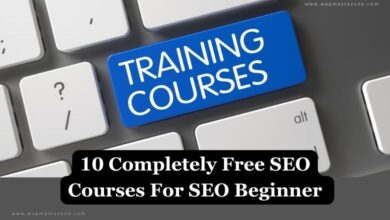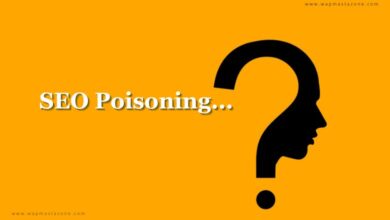
How do you write a blog post for SEO? blogging allows you to reach different users across the world. However, the sheer volume of content on the web means that your blog post can easily get lost in the noise. This is where Search Engine Optimization (SEO) is useful.
SEO is the practice of optimizing your content to rank higher in search engine results pages (SERPs). When done right, it can drive organic (non-paid) traffic to your blog, increase your visibility, and ultimately help you achieve your blogging goals.
Also read: 13 Key Indications that your SEO Strategy is Successful
The Basics of SEO
Before I go into the details of writing SEO-friendly blog posts, I will walk you through some of the fundamental concepts of SEO. SEO can be categorized into different types: on-page SEO, off-page SEO, technical SEO, and local SEO.
1. On-Page SEO:
This refers to the optimization you do directly on your blog post or webpage. It includes elements like keyword usage, content quality, headings, meta tags, and internal linking.
2. Off-Page SEO:
This involves optimizing factors that are external to your blog post, such as backlinks from other websites, social signals, and domain authority.
3. Technical SEO:
Technical SEO involves optimizing the technical aspects of a website to improve its search engine visibility and performance.
4. Local SEO:
Local SEO is an SEO strategy that focuses on enhancing a business’s online visibility in local search results. It involves optimizing a website and online presence to attract customers from a specific geographical area, typically within a certain radius of the business location.
Also read: 40 SEO Faqs (SEO Frequently Asked Questions)
The Foundation of SEO For Blog Post
For the purposes of this article, I’ll primarily focus on ON-page SEO, because it’s where you have the most control over your content’s optimization.
1. Keyword Research:
Keyword research is one of the most important things to do in SEO. It involves identifying the specific words and phrases (keywords) that your target audience is using when searching for information related to your blog post. Below are how you can conduct effective keyword research:
a. Use Keyword Research Tools:
To choose the right keywords, first, you need to understand your preferences, user, and search intent. Then think about what they might search for when seeking information on your topic. There are several keyword research tools available, both free and paid. Popular options include Google Keyword Planner, SEMrush, Ahrefs, and Ubersuggest. You can use these tools to get insights into search volume, competition, and related keywords.
b. Find Long-Tail Keywords:
While generic keywords can be highly competitive, long-tail keywords (more specific and longer phrases) are often easier to rank for and can bring in more targeted traffic. For example, “best DSLR cameras under $500” is a long-tail keyword.
c. Do Competitor Analysis:
Analyze the content of your competitors who are ranking well for your target keywords. Identify gaps in their content that you can fill with your blog post.
d. Organize Your Keywords:
Group your selected keywords into categories or themes that align with your blog’s overall topic. This helps in creating a structured and organized content plan.
Also read: 140 SEO Abbreviations, Acronyms, and Terms For SEO Optimizer
Also read: Top 14 SEO Tips and Tricks For Establishing Niche Authority
2. Create Quality Content:
Once you’ve conducted thorough keyword research and have a list of target keywords, the next thing is to create high-quality content that meets the needs of your target audience. Below are some tips for creating SEO-friendly content:
a. Create Valuable Content:
Your blog post should provide valuable information, solve problems, or entertain your audience. High-quality content is more likely to be shared and linked to by others, which can boost your SEO.
b. Engaging Headlines:
Write compelling and descriptive headlines that incorporate your main keyword. Headlines are often the first thing readers see, so make them attention-grabbing.
c. Keyword Placement:
Incorporate your target keywords naturally into your content. Avoid keyword stuffing, which is the excessive use of keywords that can harm your SEO efforts and readability. Aim for a keyword density of around 1-2%.
Also read: Robots txt Generator And How to Use it for Website Indexing
d. Well-Structured Content:
Organize your content into sections with clear headings. Use subheadings (H2, H3, etc.) to break up long content into easily digestible chunks. This not only enhances readability but also helps search engines understand the structure of your post.
e. Quality and Length:
While there’s no strict rule for post length, longer, in-depth content often performs better in search results. Aim for at least 1,000 words, but prioritize quality over quantity. Ensure your content is well-researched, informative, and well-written.
f. Use Images and Multimedia:
Visual elements like images, videos, and infographics can enhance your content and engage readers. Be sure to optimize images by compressing them and using descriptive alt text.
g. Internal Linking:
Include links to other relevant pages or posts on your blog. Internal linking helps users navigate your site and distributes SEO authority throughout your content.
h. Mobile-Friendly:
Ensure your blog is mobile-responsive. With the increasing use of smartphones, Google prioritizes mobile-friendly websites in its search results.
Also read: The Significance of Mobile Optimization in SEO
Also read: What is SEO Optimizer
3. Optimizing Your Blog Post:
After creating valuable content with strategically placed keywords, below are some important on-page SEO steps to take in optimizing your Blog Post For SEO;
a. Meta Title and Description:
Your meta title and meta description are what users see in search results. Craft an enticing meta title (around 60 characters) that includes your main keyword and a meta description (around 150-160 characters) that summarizes your post’s content and encourages clicks.
b. URL Structure:
Create a clean and readable URL for your blog post. Use hyphens to separate words and include your target keyword. For instance, in this article, our focus keyword is “Blog Post For SEO” and you would notice this in the URL structure as “www . wapmastazone . com/Blog-Post-For-SEO/ “
c. Header Tags:
As mentioned earlier, Use header tags (H1, H2, H3, etc.) to structure your content logically. The H1 tag should typically match your headline, and H2 and H3 tags should be used for subheadings. This hierarchy helps search engines understand the importance of each section.
d. Optimize Images:
Compress images to reduce file size and improve loading speed. Use descriptive file names and alt text that include relevant keywords.
e. Keyword Variations:
Incorporate keyword variations and synonyms naturally in your content. This can help you rank for related search queries.
f. Schema Markup:
Implement schema markup, also known as structured data, to provide search engines with additional context about your content. This can result in rich snippets in search results, enhancing click-through rates.
Suggested tool: Free Schema Markup Generator
g. Speed and Performance:
Ensure your blog loads quickly. Slow-loading websites can lead to high bounce rates and lower search rankings. Use tools like Google PageSpeed Insights to identify and address performance issues.
4. Blog Post Regular Update
SEO isn’t a one-time task; it’s a process that requires performance monitoring. For you to maintain and improve your blog’s SEO, consider the following:
- Regularly update your blog with fresh, relevant content. Google tends to favor websites that consistently produce new and data-driven content
- Use tools like Google Analytics to track your website’s performance. Monitor metrics like organic traffic, bounce rate, and click-through rate to identify areas for improvement.
- Actively seek opportunities to build high-quality backlinks from authoritative websites. Backlinks are an essential off-page SEO factor that can significantly impact your search rankings.
- Ensure good User Experience (UX) on your website. This includes fast loading times, easy navigation, and mobile responsiveness.
- Regularly check for and fix broken links on your blog. Broken links can harm user experience and SEO.
With all the aforementioned properly implemented, you should start seeing results soon.
Also read: RoadMap to Becoming An SEO Expert
Also read: 15 Top SEO Experts and Specialists
Read also: How to Become a GhostWriter – Beginners Guide
Also read: What Makes a Good Writer And 10 Traits of a Poor Writer
Read also: 40 Best Writers of All Time – Dead And Alive
Recommended: Research Article – 7 Reasons Why Article Originality Matters
Recommended: The Importance of Defining Audience in Content Writing
I hope you find this article useful 🙂



